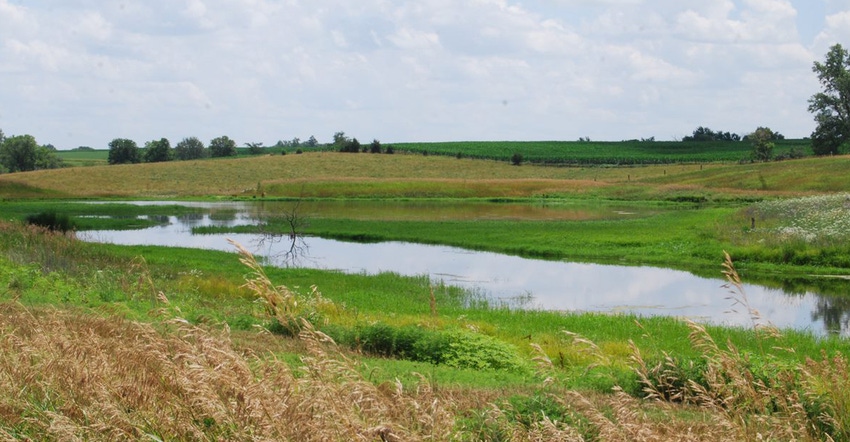July 8, 2019

The Iowa Department of Agriculture and Land Stewardship is getting a $1.15 million grant from the Environmental Protection Agency’s Gulf of Mexico Program. Announced in early July, the funding will be used to install up to six wetlands in targeted locations to improve water quality and habitat in the Middle Cedar River watershed in eastern Iowa. It’s estimated this project will reduce downstream nitrogen loads by 58,000 pounds per year.
IDALS is partnering with the cities of Cedar Rapids, Cedar Falls and Waterloo; Iowa State University; Iowa Corn Growers Association; Iowa Soybean Association; and Iowa Farm Bureau on this project to locate, promote, design and establish water quality protection and improvement practices in these watersheds.
“Working with EPA and local communities, we are taking on the challenge of improving Iowa’s water quality by implementing conservation practices in priority watersheds,” says Iowa Secretary of Ag Mike Naig. ��“Whether you live in the city or country, we all have a role to play. These types of public-private partnerships and rural-urban projects are perfect examples of what we can accomplish when we all work together to achieve our common goal — preserving Iowa’s natural resources for the next generation.”
Using most effective practices
IDALS and partners are continuously investing in innovative water quality projects to ensure the most effective practices are used as implementation scales up, Naig says. The Middle Cedar River project will build on past experience to incorporate new placement techniques that expand the number of locations where a practice can be installed.
“Receiving this grant is a testament to the quality of our ongoing work to improve water quality and quantity challenges in the Cedar River,” says Steve Hershner, utilities director for the city of Cedar Rapids. “Many partners have contributed to efforts which protect our source water. This additional agreement between IDALS and EPA toward our shared goals is an exciting new opportunity to advance this important work.”
Wetlands to be installed in 2020
In addition to reducing nitrate levels in Iowa and downstream, the watersheds enhance local wildlife habitat. The area will be seeded with pollinator-friendly plants to attract bees, butterflies and other pollinator species.
IDALS, municipalities and industry associations are in the process of identifying potential locations for the wetlands and are visiting with interested landowners. The first wetlands are expected to break ground in 2020.
The Middle Cedar River watershed project is part of Iowa’s ongoing Nutrient Reduction Strategy, a science and technology-based approach to achieving a 45% reduction in nitrogen and phosphorus losses to Iowa’s waters. The strategy brings together both point sources, such as municipal wastewater treatment plants and industrial facilities, and nonpoint sources, including farm fields and urban stormwater runoff, to address these issues.
Iowa’s 84 demo projects
A total of 84 projects are located across the state to help implement and demonstrate water quality practices. This includes nine planning and development projects, 13 targeted watershed projects, seven projects focused on expanding the use and innovative delivery of water quality practices, and 55 urban water quality demonstration projects.
More than 320 organizations are participating in these projects. The state has awarded these 84 projects over $29.5 million in funding. Private partners and landowners have invested more than $49 million to support these projects.
To learn more about IDALS water quality efforts, visit cleanwateriowa.org.
Source: IDALS, which is responsible for information provided and is wholly owned by the source. Informa Business Media and subsidiaries aren’t responsible for any content in this information asset.
You May Also Like




